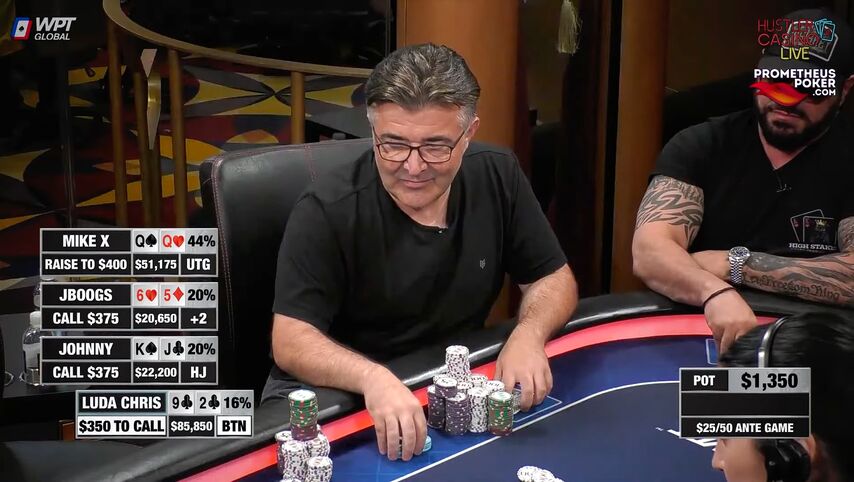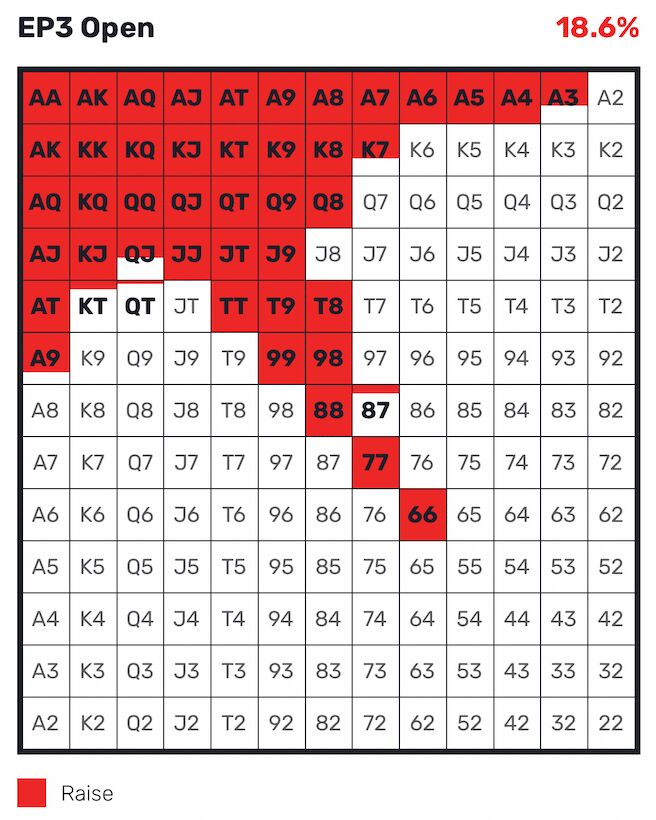What is open raise in poker and how can you use it?
Open raise in poker means the first raise in a pot during the preflop stage. You might hear other terms for this kind of raise, like “an open” or “opening”.
Even though open raises are so fundamental, many players still misplay this area of poker. The position a player is at can open raises, as can the cards a player holds. The size of the open raise is important too, as is the size of your opponent's stack.
This article will explain the open raise, with specifics for the hands you should use, when to open raise, and how big.

How to Open Raise in Poker
You’re dealt two cards in a no-limit Texas Holdem game and you haven’t seen anybody enter the pot before you. Instead of limping into the pot (calling the preflop bet and not raising), this could be a good time for an open raise.
You’ve got to make a legal raise, meaning that your size must be at least 2x the big blind amount. If the big blind is $5, the minimum open raise size is $10.
How Big Should an Open Raise Be?
Choosing a minimum raise size isn’t a good idea, since you will invite multiple opponents into the hand with you. Even if you have pocket Aces, your chances of winning will severely decrease against multiple opponents. You’ll notice that most players will choose a similar sizing for their open raise. This can vary if you are playing live or online poker.
Nobody can tell you what the perfect open raise size is, because it will change depending on the game, players at the table, and even the stakes.
In poker tournaments and sit-and-go’s, a size of 2.5x or 3x the big blind size will work for open raises.
In cash games at micro and low stakes, you might want to increase the size of your preflop open raise. This is because you are likely to have looser players in these games. Start at 3x or 4x the big blind size if you are playing in low-stakes cash games.
Which Hands Should You Open Raise With?
The hands you choose to open raise will depend on a few things.
Of course, you need to be open raising your strong hands and premium hands. Take a look at this chart below to see those hands highlighted in red. This is merely a guide and does not mean that you should always open raise your hands like 87s and 98s.

The longer you spend at a table with other players, the more you can adjust your open raise range. If you’re at a table with very tight opponents, you might reduce the hands you open raise with. On the other hand, you can open raise more if your opponents are loose.
If you want to find loose tables, you don’t have to look any further. Select any of the high-traffic sites listed below and check out the micro and low-stakes cash game tables. Low-level tournaments will also have a large number of recreational and fun-seeking players.
- Increased first deposit bonus
- Increased rakeback and reloads
- Help with deposits and cashouts
- Access to private freerolls
- Round-the-clock support
Table Position Change Open Raises
You should always be thinking in terms of position when you choose to open raise or take any other action at the table.
Take a look at the table positions in our illustration. The early position is highlighted in red, the middle is yellow, and the late positions are in green.

In early position, you want to open raise a much stronger range. After you open raise, lots of your opponents will get to decide whether to call, fold, or raise. You don’t want to open hands that are too weak from an early position. You’re likely to see a flop with more than 2 players (depending on your open size), plus, you’ll be the first to act.
In late position, you should widen the range of hands that you open raise with. You’ll have a chance to see how many other players are going to be in the hand and postflop, you’ll have a positional advantage.
If you’re interested in knowing more about how position affects poker, check out our short guide.
Opponent Stack Size Matters for Open Raises
If you don’t take a look at your opponents’ stack sizes, you might make a costly misplay. Let’s imagine you open raise and your short-stacked opponent decides to go all-in. This can put you in a tough spot, so you should always be wary when you open raise against short stacks.
If you open raise against a short stack with the hope that they move all in, you could consider choosing a slightly smaller size. This can often make less experienced opponents think you are weak, which could make an opponent shove if they have a low number of chips.
Practice these kinds of traps in freeroll tournaments throughout the day, especially on partypoker. You can enter Round the Clock freerolls at partypoker every single hour of the day, with prize pools ranging from $50 to $200 for each event.



















